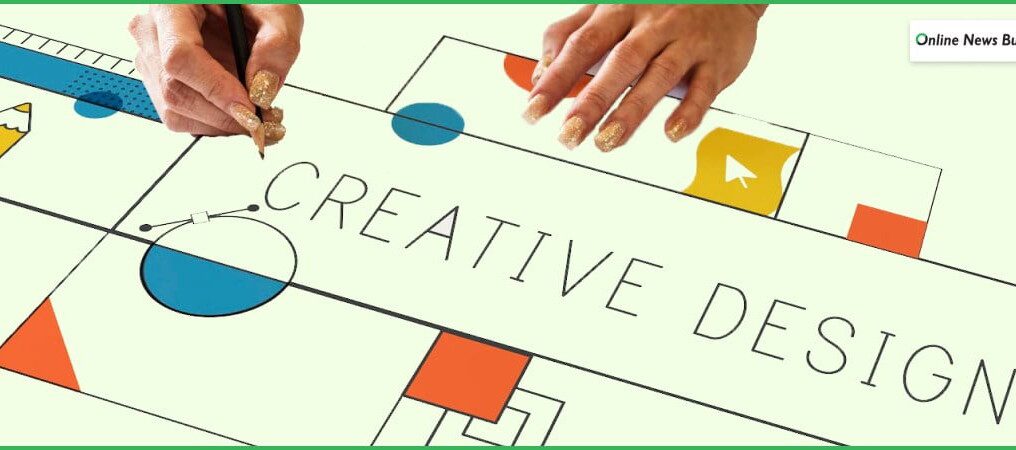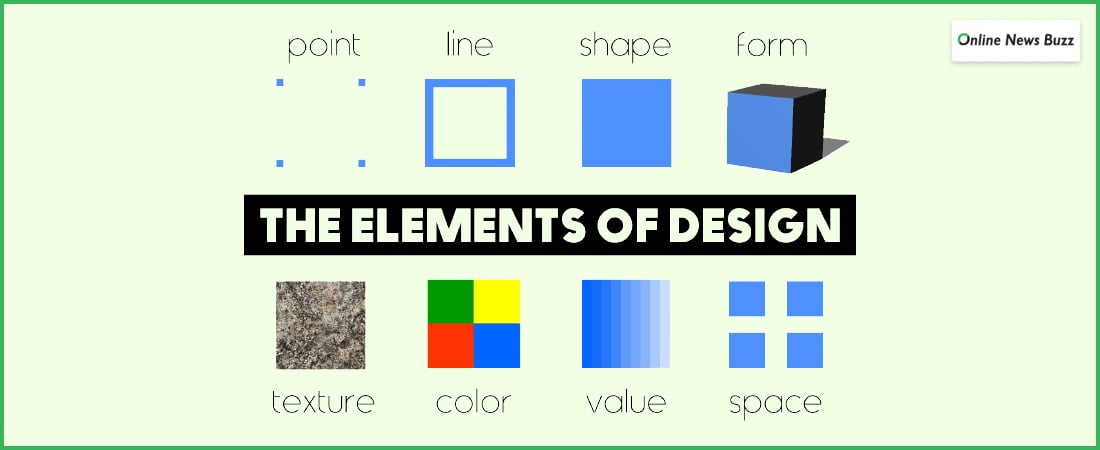
“You Can’t Use Up Creativity. The More You Use, The More You Have.” – Maya Angelou
Design is a subjective topic that gets highly dependent on a person’s perception. Though the principles of design have led to a groundwork for most designs to be based on, there’s still more. A design is an artist’s expression – it has no limits and follows no rules. It’s art.
However, artists need to know some key concepts and elements that automatically make a design better. Although artistic expression has no boundaries, these concepts are still viable because product designs should be sellable in 2022. Your design will have no value if it does not move a person or a customer.
Many designers consider the principles and elements recommended by legendary designer Dieter Rams to be the holy grail for designers. Most designers follow these principles and have seen drastic changes and improvements in their approach to designing.
But what are these elements of art and principles of design? Let’s find out.
Read More: A Guide to a Better Web Design
Elements Of A Design
“Every Great Design Begins With An Even Better Story.” – Lorinda Mamo
All designs have certain elements that provide them with more value and make them attractive to the customers. Even though customers come from multiple cultural and artistic backgrounds, some key elements and principles of design attract all. Consider these elements as the makeup of great designs.
The primary elements and principles of design that make a design complete are.
1. Line
A line is the basic outline of all shapes and objects present in a design. A line gets used to separate the subject from the background, defining its dimensions in the most understandable way. When it comes to lines, length becomes the dominant factor here, since that is what a line typically represents.
2. Form
Every subject or product has its set value of mass. The design of a product depends on the size of the object. This is because different design strategies and ideas end up getting based on the form of the object. For example, you can add more details to larger products than smaller ones.
3. Texture
The surface of a product can be made smoother or rougher. This depends on the designer’s vision and how it aligns with customer expectations. Adding texture to the product’s surface is important because it adds some spice on top. This adds a different feel when customers touch a product.
4. Value
The contrast in the form of light and darkness can add a different layer of complexity to the product. Adding value in the form of contrast is helpful to make your products look more attractive. It attracts the eyes of the customer and makes them inclined towards buying them.
5. Color
The color of an object is by far one of the best elements alongside the form and shape of an object. Color, upon which value is provided using contrasts and values, is the perfect eye-catcher. The vivacity of the product often elevates the customer’s perception of the product.
6. Shape
To make a design complete, it needs to have a shape. While the form of a product is its overall size, the outline provides the product’s final form. The shape quill defines many of the other elements of the product, like its color scheme and texture, since designers try out different combinations to come to the conclusion.
Dieter Rams – The Man Behind Apple
“Nothing Appeared To Be Hidden Or Exposed, Just Perfectly Balanced And Appropriate In The Hierarchy Of The Product’s Details And Features.” – Jony Ive
Why do you think the logo of Apple looks so clean and professional, befitting the stature of the company? The answer is simple – it’s because Dieter Rams inspired Jony Ive, the designer of Apple.
Dieter Rams is one of the biggest names in product designing and branding. Born in Germany in 1932, Dieter got his share of artistic influence from his grandfather, a carpenter. After discovering his creative potential, he started working for the electrical company Brain in 1955.
After working for 40 years at Braun, his popularity as a great product designer increased every year. Dieter is most notable for his eco-friendly product designs that used recyclable materials and parts. In addition, he followed strict principles of design that he implemented in his product and logo designs.
Click Here To Read Out: Product Designer vs. UX Designer: The Difference Explained
Dieter’s Principles Of Design In 2022
“Having Small Touches Of Color Makes It More Colorful Than Having The Whole Thing In Color” – Dieter Rams
The 1970s saw the start of the great glam era of pop stars, nightclubs, and big-budget eye candy Star Wars movies.Duringuring this period of t, Dieterter was influenced by everything around him and decided to base his work on the exact opposite – enforce principles of design through minimalism.
While asking himself if his designs were good or not, Dieter saw that some good design concepts were applicable in all cases. Whether it’s designing brand logos or products, these concepts come of great use every time.
So what are the principles of design in art that many consider their holy grail? They are,
1. Innovation Is Success
Dieter always stresses the importance of creativity and innovation while designing products. Creativity is boundless and limitless. It can be whatever your mind can conjure up at any moment. Therefore, always try to think out of the box and extraordinary to make the best designs.
2. Enhance Your Products
When you have a product to design, you have to work with a particular theme in hand. Not all concepts and ideas will go well with all designs. Depending on your product requirements, you will have to work with a few design themes.
Product enhancement through design is one of the most overlooked principles of design. Mix and match different concepts to come up with a design that enhances the product and makes its main features stand out.
3. Aesthetic Value
Keeping it aesthetic is key according to Dieter. Making a jumbled mess of various ideas will never improve the design. Therefore, always work with a few ideas to incorporate into your design. Do not stuff your design with many elements since it reduces their aesthetic value.
4. Understand Your Product
Understanding your product and its requirements is the first step you should take when you are responsible for designing it. This is important because all products have a purpose and function, which is why customers will want to buy them. In addition, coupled with the company’s brand image, your product design gets influenced by many factors.
5. Has A Purpose
Every product has a purpose that should be accentuated by the product design. Therefore, your design should also have a purpose – to make the product easy to use for the customers. If you can fulfill this purpose of your product and make it look pretty, you deserve that paycheck.
6. Honesty Is Necessary
Always be honest about your design. But how is honesty one of the principles of design? Whenever you design a product, make sure that you have elements on it that resemble your principles of design. This includes making the product less fashionable and letting it speak about the uses of the product itself.
7. Lasts Long
Most fast-moving durable goods (FMDG) products are meant to be bought infrequently since they last long. Therefore, make a product design that makes this possible. Make the product handy to use, and it is somewhat hardy. Also, make it less grandiose and flashy to withstand years of use and still retain its colors and looks.
8. More Detail Please
If you have a product that has a bigger form, you can add more details to it to enhance its artistic value. Smaller products are best left untouched here (unless they have to be heavily labeled).
However, some products with multiple functions (like a calculator, radio, television, etc.) need to be labeled. They also look best when they get coupled with a detailed and textured design. Therefore, put in the extra effort for the customer when you have the chance.
9. Eco Friendly
Dieter Rams was a big advocate of these principles of design. He built eco-friendly products like comfy chairs made with biodegradable substances like leather and even recyclable materials to make the parts usable even after its death. their.
10. Minimalistic
“Less is more” – this famous phrase was first quoted by Dieter a long time back. He emphasized the principles of design that say the product’s simplicity through its designs. This ensured that there was space to focus on other aspects of the product, like how a user will operate the product.
Things To Keep In Mind While Designing
Some other essential elements of a good design that you can incorporate in your product design are.
1. Contrast
Create good contrast between the colors and shades of the product. This will make the product look vivid and exciting in customers’ eyes, making certain parts of the product stand out. Conversely, creating a monochrome product looks boring and should be avoided.
2. Balance
“Perfectly balanced, as all things should be” – Thanos
There should be a good balance amongst all the colors used in the products. In addition, the different parts of the product – whether they are made of plastic, wood, or metal, should also have an artistic ratio to it.
3. Emphasis
Like contrast, use colors, shades, and weight ratios to make sure important parts of the product stand out. Make use of color contrasts and asymmetrical shapes to do so. For example, when it comes to a smartphone, the emphasis should be placed on the screen, followed by the camera, and then the back cover.
4. Proportion
All the parts of the product should be carefully curated and proportioned. No part should be inappropriately bigger or smaller than what’s required. Therefore, always understand what are the features of the product, followed by which parts should be emphasized and what should not be.
5. Hierarchy
Appearances should not deceive the user into thinking what’s important about the product and what’s not incorrectly. The most important parts of the product should be made clear by its size, color, and shape. Therefore, make it stand out amongst everything else.
6. Repetition
Repeating specific colors and patterns on the product will give off a sense of familiarity and unification. For example, if you are designing a webpage, you can use the same header font and color for all headers, with all other text being of a different color. This makes the idea of your product clear to users.
You May Like To Read This: Best Web Design Companies in Dallas
7. Rhythm
All the patterns and colors on your product should be repeated in a distinct rhythm. Principles of design like this lie more on the creative side of things. For example, you can use the same pattern all over the product using the same spacing between them.
Keep it farther away from each other to create a calm and serious rhythm. Make them irregular and close to each other to create a more vibrant and fun vibe.
8. Pattern
Create unique patterns on the product that can act like design textures on the surface. Repeat these patterns on the product to give it a design rhythm that makes your product look more interesting at first glance.
9. White Space
White space refers to the empty spaces on the product where there are no designs. It is necessary to keep these empty spaces on the design so that patterns and colors do not get cluttered on top or too close to each other.
10. Movement
Movement as principles of design refers to hown our eyes move when we look at a product. For example, when you look at a laptop, the first thing you notice is the entire product, especially its back. Then, the eyes of the user rolls over to the screen and the keyboard of the laptop.
11. Variety
Use different colors, patterns, and repeat them to create a sense of variety in the product design, and keep it from getting monotonous and boring to look at. For example, use different colors on the laptop keyboard in the form of RGB lights.
This can be done in a web page by using varied sizes of letters to highlight certain parts of the page, along with using various images and gifs.
12. Unity
If your product design and the patterns in it do not gel well with each other, then you have failed as a designer. Making sure all fonts, sizes, colors, and patterns go well with each other and create a complete product.
Frequently Asked Questions (FAQs):
Q1. What Is Symmetry And Balance?
According to the principles of design, symmetry is the use of the same pattern on a product twice, with one of them being the mirror of the other. On the other hand, balance refers to the equal distribution of contrast, color, and patterns.
Q2. How Do You Use Principles Of Design?
To use the principles of design and design a product, think about the product, who will buy and use it, and how to make it look attractive yet minimalistic.
Q3. Why Are The Principles Of Design Important?
The principles of design are very important because it allows you to have a fundamental understanding of how to make good design choices.
Q4. What Are The 3 Keys To Good Design?
The three keys to good design are.
- Color combination
- Repetition and rhythm
- Minimalism
Conclusion
The various principles of design set forth by Dieter Rams is evergreen when it comes to designing products. This is because his minimalistic design choices and ideas have helped inspire other designers to create some of the best product, ohio, web page, etc. designs better and impactful.
To keep the minimalistic design, you must incorporate various colors, patterns, details, eco-friendliness, and durability, all in one package. If that design is still then considered minimalistic even after incorporating all these ideas, you have done your job as a designer.
Read More:
- Design Tools Used in News and Magazines
- 5 Tips for Designing A Killer Label Graphic For Your Products
- Why DIY WordPress Design is Better Than an Agency?
































